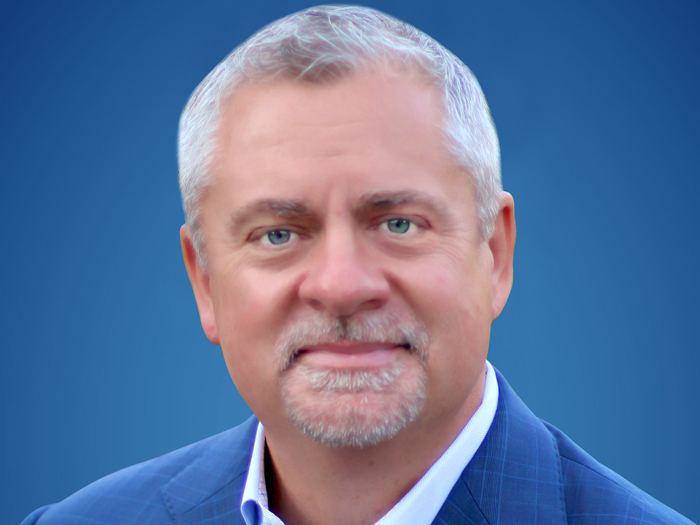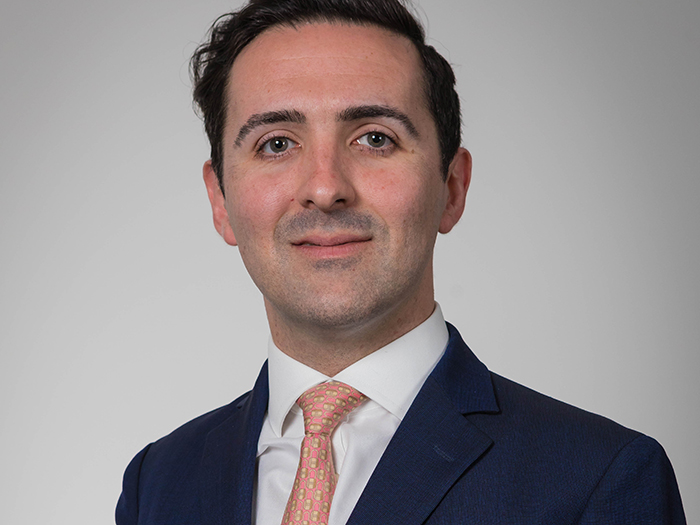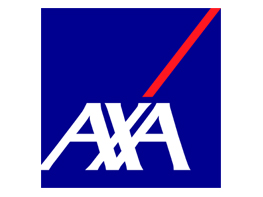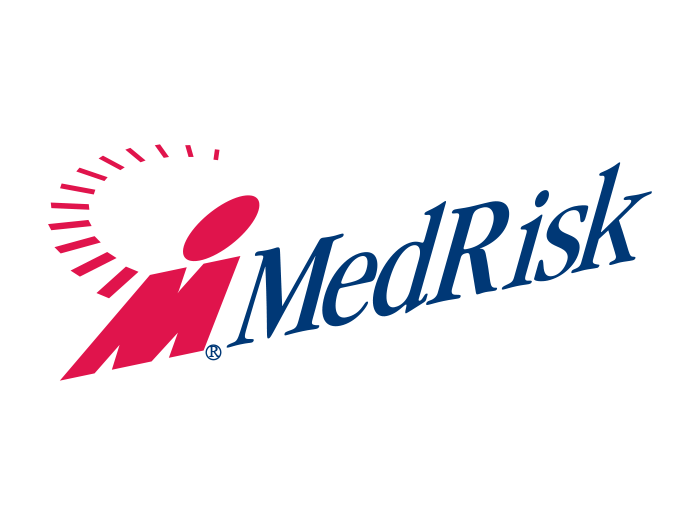12 Questions for QBE’s Steve Gransbury

In November, Risk & Insurance editor-in-chief Dan Reynolds caught up with Steve Gransbury, Head of Specialty and Residential Insurance for QBE North America. What follows is a transcript of that discussion, edited for length and clarity.
Risk & Insurance: Thanks for giving us some of your time, Steve. For starters, if you don’t mind filling our readers in on your overall responsibilities.
Steve Gransbury: Sure thing and nice to meet you. I am responsible for our North America Accident & Health, Aviation, and Residential business units. I’m also part of the executive management board for QBE North America. I’ve been with the company for 14 years, via acquisition, and I spent the majority of my career in the accident & health space, but I’ve broadened my responsibilities to look after our specialty lines for the past four years or so.
R&I: Well, congratulations on a great career. For starters, can we talk about aviation if you don’t mind? We’ve heard so much about the Russia-Ukraine war and its impact on vessels and on markets, but what’s your take on what these past few years have meant to the aviation insurance business, either on rate or capacity?
SG: There seems to be increased capacity for sure, which is interesting because if you look across the general aviation and major risk space, there is increased exposure, there are increased claim costs and there is overall expense pressure. Yet, capacity seems to come to the market without any abatement, essentially.
There are potential new carriers in this space. There are program managers that are contemplating branching out from their core P&C or specialty lines of business into aviation. And when you look at the market, it isn’t just hull losses and liability losses.
If you look at the impact of the supply chain and repair cost inflation, just like commercial auto, there’s also an impact there. In the liability space, there’s the social inflation impact just like other casualty segments. You brought up the Russia losses and that’s on the horizon for sure. The challenges in this space right now could be compounded even further by how that larger risk develops related to unreturned leased aircraft from Russia.
So responsible carriers are putting out the appropriate loss development and set asides on the reserve to prepare for that. But that’s a long way from being over.
If you look at general aviation and major risk aviation, reinsurance rates have increased, but I think a lot of carriers have upped their nets, if you will. They’re retaining more risk on their balance sheet to lessen the impact of some of the increases or firming that is being attempted in the reinsurance community. So it’s going to be interesting. The second half of 2023 we saw some rate deterioration, which was a little frustrating.
I think that the market needs to continue to push on rate to prepare for some of those losses, but QBE remains disciplined. We deploy a very technical approach to our underwriting. If we don’t see the opportunity to have technical adequacy in the ratings, that’s probably going to be an area where we’re not going to undermine our risk appetite. In the areas that we can get technical adequacy, that’s where we’ll choose to be commercial. But our model will enable us to adapt and focus on the profitable segments within aviation as the market continues to reconcile this cycle that it’s in.
R&I: You mentioned that dynamic between reinsurers and insurers and how much of your risk you’re potentially transferring to a reinsurer and how much you’re retaining. In times when rates are more attractive to you, you may be tempted to transfer more risk. That’s a fundamental discipline within insurance, is it not?
SG: That’s how carriers manage the firming markets or the hard markets and the soft markets. But it’s interesting. That’s certainly very true and that’s an underlying discipline to effective capacity management and risk management. But from our standpoint, we’re a big global insurance company. For us, it’s really less about utilizing outside reinsurers for capacity, it’s more about effective severity management.
Accessing reinsurance helps insurance companies manage the volatility associated with frequency and severity. From our standpoint, reinsurance is incredibly important. It’s a core component to managing any carrier balance sheet. From our standpoint capacity generally not an issue. We want to be able to underscore our profit targets both on a gross and net of reinsurance perspective. So for us, reinsurance is largely about severity management to make sure that we protect our balance sheet from catastrophic claims.
By and large specialty lines of business are associated with bespoke underwriting, evaluating the individual risk, lower frequency and higher severity. Effective reinsurance arrangements are a foundational element to our financial plans.
R&I: Staying on aviation for just a second, are you able or willing to say what in your experience in recent years have been the more profitable segments in aviation, and then contrast that with the less profitable segments, if you don’t mind educating us on that.
SG: It’s a little bit of both. If you look at the two primary areas of commercial aviation business practice, general aviation and major risk. Major risk is products and national and international airlines.
If you look at that market segment, the products piece has been beset by losses related to the Boeing 737 Max issue. That was a huge products loss across the industry. But if you look at the airline space, there hasn’t been a major incident in a number of years.
Just look at the aviation insurance industry as a community, which includes carriers, risk managers, maintenance organization and components manufacturers. There are very few industries that are regulated as aggressively for safety and testing than there is aviation. So, the fact that there hasn’t been significant major risk loss outside of the products component with the Boeing 737 Max issue, it’s a testament to this industry’s safety and risk management culture.
But what has happened is that rates are way too low. There’s not enough margin in the rates to accumulate or to acknowledge that there’s catastrophe pricing in your underlying rating.
So that’s really an area where you got to be judicious in terms of risk selection. You really have to understand the risk.
I’ve found that aviation underwriters tend to be aviators first. They’re pilots, they’re mechanics, they’re folks that have military experience, they have practical experience in the aviation community and they become underwriters. You need a deep understanding to be able to build your technical parameters, your technical rating tools and use the tools technical and subject matter expertise to select risk accordingly.
R&I: Those of us who simply go on Expedia and buy a ticket and stand in line and hop on a plane, really have no idea how much engineering and safety maintenance goes into this industry.
SG: You’re a hundred percent right. These pieces of equipment have to go through periodic safety and maintenance reviews. I’m an A&H guy, I’ve been in the aviation business for just a few years and my team, they’re subject matter experts. They really know what they’re doing.
What I bring to them as the leader is really making sure they have the tools, the appropriate planning, the investments necessary to be successful, investments in technical tools, investments in talent. And what I bring to the table is supporting them with the needs and overall P&L leadership and underwriting leadership.
I found that specialty underwriting leadership or operations leadership is agnostic to a specific line of business. You have to make sure you arm your people with appropriate budgets and investments.
You’ve got to incorporate rate and retention, target losses, a good claims value proposition and then make sure that you’re contributing to your stakeholders, specifically your customers and your producers, your brokers, that you’re adding value across the value chain. I’m not an aviator and I wouldn’t pretend to be, but thank goodness we have some qualified professionals running the program day to day.
R&I: Amen to that. Well, thanks for the aviation information and you mentioned you’re an accident and health guy. Could you help our team understand how accident and health originated, Steve, and how it’s growing at QBE?
SG: Our lead product in the A&H portfolio is medical stop-loss insurance. Medical stop loss is purchased by the majority of self-funded employer-sponsored health care plans in the United States. Like QBE, I’m not sure how many employees your magazine has, but if you’re over 200 lives, chances are that the employer takes on the burden of funding the medical claim liabilities incurred by the plan participants, and they contract with a health care insurance company or TPA to process the claims and give employees access to a network of doctors and hospitals.
The funding parameters around the self-funded plan are really blind to the employees. The employee knows that I have health care insurance, I go to the doctor, my copay, my deductible, my out-of-pocket max. But the claim funding mechanism that the employer, that most large employers have is that they self-fund the claim activity.
What they do is they buy medical stop-loss insurance. So, if you think of a group that might be 1,000 employee lives, they might say, “Every individual claim under $200,000 for example. We’re going to pay for out of general cashflow, but we’re going to buy something that’s structured as an insurance product to protect than health plan from the volatility associated with large individual claims. Large claims like transplants, premature births or gene therapy.”
It’s akin to a reinsurance product in that we’re going to seek risk transfer for any catastrophic or large claims, maybe in this situation above $200,000. This is a massive insurance business segment in the United States. It is a $34 billion marketplace and that’s just medical stop-loss. It’s larger than group life insurance, it’s larger than group dental insurance, it’s a larger market than disability insurance.
It’s the single most significant buy that a lot of HR managers, CFOs and risk managers will have each year, to support their underlying health insurance plan. The health insurance plan, as you all know, is really incredibly important to employers when they’re trying to attract and retain talent, whether it’s the structure of the plan or what the contribution strategy is.
That’s our space. In our peer group, we’re a top 10 independent stop loss carrier in the United States. This market has been growing double digits for a number of years. If you look even post health care reform, most employer groups balance the efficiency of their insurance expense with the control of the provision of their benefits, and many employers choose to be self-funded as opposed to a fully insured arrangement.
In a fully insured group health plan, the employer is paying a set amount, or the single and family rates to the insurer every year. Self-funding provides the opportunity to assess performance and evaluate the components of a health plan to ultimately provide an effective benefit solution to their employees.
We’re a top ten independent stop-loss carrier and we focus on the health care continuum. We have nurses in our program that partner with our underwriters to determine ongoing liability and implement cost containment strategies for our customers.
R&I: That was an excellent explanation, thank you. If you look at the cost of health care, are what we call social inflation or nuclear jury verdicts playing into this? If I’m trying to reinsure essentially against a catastrophic claim, are those factors in play?
SG: I would say not directly, but indirectly. When I think about the ingredients to the cost of a claim, you certainly look at medical inflation, you look at the cost of drugs, you look at provider contracting.
Provider contracting is when health care insurance companies, or networks, go to a hospital system and negotiate discounts to procedures, hospitalizations, treatments and related services. Those medical systems need to assess their risk management programs as a component of their cost of care.
Providers have a cost of their operations that acknowledges social inflation. The liability associated with the nuclear jury verdicts that you reference indirectly plays into the cost of care, but those liability claims are not part of medical insurance, nor are they part of stop-loss reimbursements.
R&I: It’s a factor that the provider has to take into account and is passing on.
SG: Exactly. They’ll use that in terms of how they negotiate with health care insurance companies for discounts. They have to formulate that into their cost of doing business.
That’s important for us because we want to price our business around providers, hospitals, and physicians that have two critical things. One is best outcomes.
We want the quality of the care to be successful, so claimants don’t have to go back to the hospital. The second consideration is the true cost of care and network discounts associated with specific providers.
We’re in the million-dollar claim business and we want to make sure that there’s going to be good outcomes, but also there’s the appropriate cost containment and discounting in place and we base our underwriting and claim projections around that.
R&I: It sounds like from everything you told me, you expect the growth in the accident & health business at QBE to be pretty substantial going forward. Is that fair to say?
SG: Yeah, I think so. A&H and specifically the stop-loss portfolio is our largest specialty business at QBE North America. So it’s a big part of what we do in our specialty practice. For us, it’s really about judicious growth. We have to acknowledge that the market is evolving. I mentioned self-insurance is growing, and when there’s self-insurance growing there’s more stop-loss buyers.
Capacity is increasing. If you look at some of the challenges that some of the domestic P&C companies have right now with nuclear verdicts liability and CAT property, stop-loss seems like a nice, attractive compliment to many of our competitors’ product portfolios.
There’s no shortage of competitors that are contemplating entering our space.
Clean business is at a premium right now. When I say clean business, that means it has a good historical loss profile without significant expectations for ongoing liability.
That business is at a premium and very aggressively sought after. Loss ratios are up. NAIC does a great marketplace segmentation analysis every year. So the loss ratios specific to this $34 billion marketplace and stop-loss, they’re up year over year.
We’ve been very successful in terms of year over year premium growth in our space. We’re growing our business, which is important to our brokers. But we’re also a solid upper decile performer in loss ratio within our peer group.
For us, we see great opportunity in A&H and, in particular, medical stop-loss, but if we don’t have the right recipe of technical rate adequacy, business that’s in our risk appetite, and what our clinical expectations are in terms of no liability, we’re going to choose not to play.
We’re not going to chase the market, because the opportunities are there, but we’ve got a good technical process in place where we’ve been successful at delivering on both our requirement to produce profitable business, but also supporting our limited and preferred broker partners.
We want to have a high retention rate by partnering with our brokers and customers. We want our business to persist with us for a long period of time and have policy holders that are not year to year, but might be with us five, six, seven and, sometimes, 10 years.
R&I: Great stuff. Do you mind, before we close, talking about the residential business, how you define it and then what are your customer’s needs in there? What pain points are you seeing?
SG: The shining star in that portfolio is our renter’s business. We offer a technology solution to align our products with multi dwelling unit property managers.
Renters are generally underinsured in terms of coverage for personal property and liability. We know this is a business that we can grow significantly each year because the need is there and maintain our margins.
Offering renters’ coverage offers diversification in our specialty portfolio.
Renter’s business is low severity, more frequency. And really, it’s the technology platform that solves for the underwriting. So, we want to be able to engage potential buyers and rental insurance virtually. We want to be able to direct them to self-service portals, point and click and acquire coverage and file claims.
We think it’s diversification within the specialty portfolio and it represents an opportunity for us to grow a profitable book of business that’s not correlated to our other specialty lines. Our value proposition is strong in this segment. We have affordable products designed for tenants that offer quality coverage and ease of access through our portals, while meeting many lease requirements for insurance.
R&I: This may be an unfair generalization, but maybe folks that tend to rent just don’t have that insurance sophistication or acumen to say, “Hey, this is there for me, I should consider this.” And your point is, “Hey, we’re going to try and make it easier for you to just get online, look at a policy and pick one up.”
SG: We want to align ourselves with a lease transaction, not create a separate standalone renters’ insurance transaction. We offer highly customized portals that offers easy access to property managers and tenants.
We reduce underwriting barriers and streamline access to needed renters’ coverage that offers traditional benefits for contents and liability and expands coverage into water damage and electronics protection to reflect the needs of both renters and property managers.
R&I: Appreciate that. Steve, just one last question. When you look at your career, you had a long and successful career in this business, can you say or point to what professional traits or experiences really served you the best? What helped you build the career that you’ve built?
SG: One, focus on our people. Making sure that we’re strategically developing the career journeys for our people.
It’s really about being transparent, communicative, and building engagement with people so they can see how we grow together and help solve problems for our customers. We’ll never have a customer experience that is better than our employee experience.
We look to continuously improve the end-to-end customer experience with our products and services. Foundational to that is keeping the same focus on our employee experience. &










